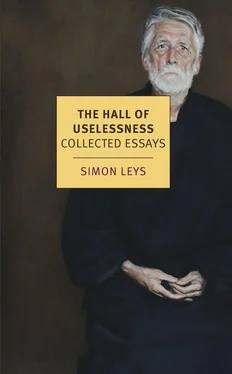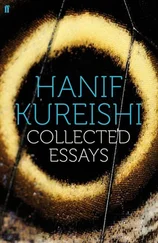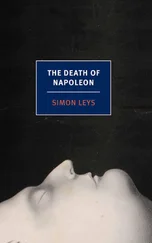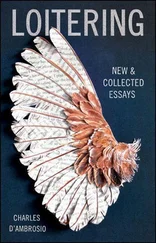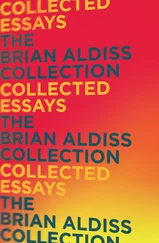Calligraphy is par excellence an art of interpretation. (To some extent the same could be said of the main artistic disciplines of China: poetry, painting, music. In each, expression matters more than invention, but it is in calligraphy that this particular aesthetic feature finds its most perfect illustration.) This does not lessen the creativity of the calligrapher, but rather intensifies it; his is a creation of the second degree. A musical comparison may be of some help here: Glenn Gould or Sviatoslav Richter are no less artists for not having themselves composed The Well-Tempered Clavier . Great interpreters efface themselves the better to serve their models; but the more successful they are at this task, the more deeply their individual temperaments and sensitivities are being revealed in their interpretations. Every touch from a great pianist, every stroke from a great calligrapher, becomes a mirror of the interpreter’s mind.
In calligraphy, the supreme aesthetic category is naturalness. Naturalness is reached when the calligrapher can forget all rules. But it is only after he has achieved full mastery of all rules that he becomes able to forget them. Calligraphy was a favourite exercise for monks and hermits, for its aesthetic paradox echoes the paradox of ascetic discipline. Through the ages, in the East as in the West, the great mystics who achieved complete obliteration of the self were also the most forceful and original personalities. In the art of calligraphy, as in spiritual life itself, when self-denial is complete, self-expression reaches its plenitude.
* * *
Jean François Billeter is a distinguished Swiss scholar who brings to Chinese studies a remarkably broad philosophical, literary and artistic culture. Having read and admired a number of his shorter essays, as well as his doctoral thesis on a fascinating “heretic” thinker of the Ming period, Li Zhi, I had awaited his magnum opus on Chinese calligraphy with eager anticipation. The book, which is superbly produced — the illustrations are magnificent and, sometimes, also provocative and surprising — kept me enthralled in its first half and, as my earlier references to it may suggest, I have drawn abundant inspiration from it in writing this essay. At a certain point, however, the book veered into what appeared to me as a rather idiosyncratic philosophy — and I must confess that I simply lost my footing (which certainly disqualifies me from writing a fair, comprehensive review). I wonder if Thoreau’s famous warning “Beware of all enterprises that require new clothes” should not also be applied to discursive essays: Beware of all thoughts that require new concepts. Those which Billeter is using here baffle me all the more since, while they are probably not familiar to the Western reader, neither have they any equivalent in the rich theoretical and critical literature which the Chinese themselves have developed on the subject. In particular, his chapters on “Body Sense” and “The Active Body”—which, in the author’s perspective, are obviously of central importance — develop notions that remain opaque to me. For instance, he concludes:
Let me sum up the results of this inquiry [into the “Body Sense”], the better to apply them to the art of writing. Underlying all our relations to the visible and even to the real is projection, a complex and variable phenomenon emanating from the body proper, in other words, from our bodily subjectivity. It is by the body proper that inside and outside communicate, that our exchanges with the world take place. The body proper is the source of all spatiality, of all organization of space.. . and, on this background, of every image, whether perceived or produced. The process of projection…“merges with the very stuff of the visible.”
Having spent some time trying to understand these reflections, I wonder now if I did not waste my effort, for I see that in a more recent article Billeter writes: “I must point out that the notion of ‘projection’ which I previously used in my Chinese Art of Writing does not appear to me defensible any longer: it should be revised.”[4]
As I was working my way with some perplexity through the central chapters of the book, I was frivolously reminded of an anecdote told by Elie Wiesel.[5] A rabbi had to attend a ceremony in a nearby town. He hired a coachman to drive him there. But once on the road, at the first hill, the coachman asked him to come down and help push the coach, for the horse was old and weak. The rabbi had to push for most of the way. When they finally arrived at their destination, the rabbi said to the coachman: “I can understand why you came: you needed to earn your payment. I can understand why I came: I needed to attend a ceremony. But I cannot understand why we brought a horse along.” The question that nagged me through the exposé of Billeter’s philosophy was similar: What need was there to drag calligraphy into this?
I have little doubt that, with the passing of time, Billeter’s book will prove to be a work of major significance — but I must also admit that I am incapable of doing it justice. Before writing this article, I read it for the second time; I felt all my old bafflement and frustrations being revived, but simultaneously I was struck once again by the wealth of original and stimulating views it contains, as well as by the illuminating quotations it draws from a wide literary spectrum — Western and Chinese.
To take only one example, on a question which has particularly far-reaching implications: Billeter rightly observes that Chinese traditional aesthetics dispenses altogether with the concept of beauty. On this theme, he presents a mutually illuminating series of references to both Chinese and European writers. Fu Shan, a great calligrapher of the seventeenth century, declared: “Rather than clever, gracious, deft and proper, I prefer being awkward, unpleasing, disconnected but true to myself.” Such a view, Billeter suggests, would have met with the approval of Stendhal, who always put authenticity above all other values: “I think that to be great in anything at all, one has to be oneself .” For Billeter, a similar idea of true originality was evoked by Nietzsche: “Each of us carries within himself a productive originality which is the very core of his being; and if he becomes aware of this originality, a strange aura, the aura of the extraordinary, shapes itself around him.”
In the quest for originality, the first requirement is to eschew vulgarity. Billeter quotes the nineteenth-century calligrapher Liu Xizai, who said: “The difficult thing about calligraphy is not how to please, but how to avoid trying to please. The desire to please makes the writing trite, its absence makes it ingenuous and true.” At this point, I feel tempted to mention Braque’s remark to a visitor who was showing him a fake Braque and insisted that it looked genuine. The painter replied: “How could I possibly have ever painted a thing like this — it is the exact opposite of a Braque: it is beautiful !”
I also found much of interest in the abundant and remarkable footnotes of Billeter’s book. To the common reader, this may sound (I am afraid) like some sort of veiled irony, but no sinologist will ever mistake the sincerity and weight of this particular praise. Which one of us would not dream that it might be said of his work of a lifetime: “He wrote a few good footnotes”?
1996
* Review of Jean François Billeter: The Chinese Art of Writing (New York: Skira Rizzoli, 1990).
AN INTRODUCTION TO CONFUCIUS
LU XUN (who is rightly considered to be the greatest writer of modern China; he died in 1936, and — by the way — strongly disliked Confucius for reasons that will be noted in a moment) observed that whenever a truly original genius appears in this world, people immediately endeavour to get rid of him. To this end, they have two methods. The first one is suppression : they isolate him, they starve him, they surround him with silence, they bury him alive. If this does not work, they adopt the second method (which is much more radical and dreadful): exaltation —they put him on a pedestal and they turn him into a god. (The irony, of course, is that Lu Xun himself was subjected to both treatments: when he was alive, the Communist commissars bullied him; once he was dead, they worshipped him as their holiest cultural icon — but this is another story.)
Читать дальше
